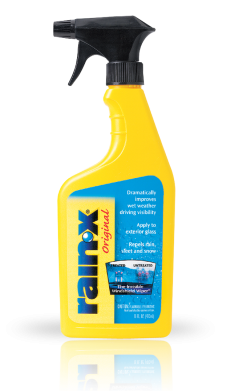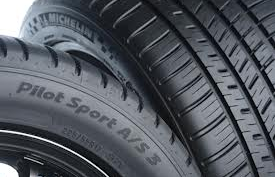It’s the time of the year again. Singapore gets an average of 19 rainy days and about 260-290mm of rainfall in November and December1. Flash floods and accidents are reported everywhere, as if our traffic isn’t already bad enough!
There’s two things all drivers can do to help yourselves and help other road users.
First, get yourself a bottle of spray-on Rain X. Don’t be one of those driving at 20km/h with hazard lights, fog lights and high beam on. It only slows traffic and makes visibility worse for other road users.
All you need is a few pieces of newspaper. Go to a sheltered carpark. Wipe off any water with a sheet of newspaper first. Spray on Rain X generously on the front, front sides and rear windscreens. Spread/apply with newspaper. Be sure to cover the entire windscreen. Wipe clean with a new sheet of newspaper. Repeat and apply/wipe off one more time. Also apply some on side mirrors. You’ll be set for the entire month.
Next, this is the time to get your tyres replaced if they are balding. Please don’t buy cheap or eco tyres — they have poor grip, that’s why they’re eco! Friction and fuel economy are inversely related. A lot of eco tyres are made for comfort and longevity and barely saves you any more fuel than a properly inflated tyre. Never compromise your safety for a few dollars in savings or fuel economy.
Some tyres that are relatively quiet and known to perform well in the wet are Michelin Pilot Sport 3 (PS3) or Goodyear Eagle F1 Asymmetric (v1 and v2).
The next thing you should check is your tyre pressure. A properly inflated tyre can make a significant difference in aquaplaning and braking performance.
For FWD cars that are nose-heavy, I usually increase the front tyre pressure by 2-3 psi above the manufacturers’ recommended cold pressure (found on the door pillar or fuel filler cover). Most FWD cars have lower front tyre pressures to induce understeer to make their lawyers happy, but an under-inflated tyre is not good for the wet.
A good mechanic once told me that if there’s anything you shouldn’t save on, it’s tyres, suspension and brakes. Each tyre makes a contact patch no larger than the size of your hand. Added together, the total contact patch is no larger than an A4 sheet of paper. That’s the amount of rubber holding your 1,400kg car to the road.
Safe motoring!
P.S. I’ve heard people say Rain X damages wiper, etc. Seriously, wipers costs almost nothing to replace compared to a weekly tank of gas. If you keep your windscreen clean and just give your wipers a wipe down often, they should last very long. Our hot tropical climate damages wipers quickly especially when it sits under the hot sun against a dirty windscreen.
1 Source: Climate of Singapore, from http://en.wikipedia.org/wiki/Geography_of_Singapore

